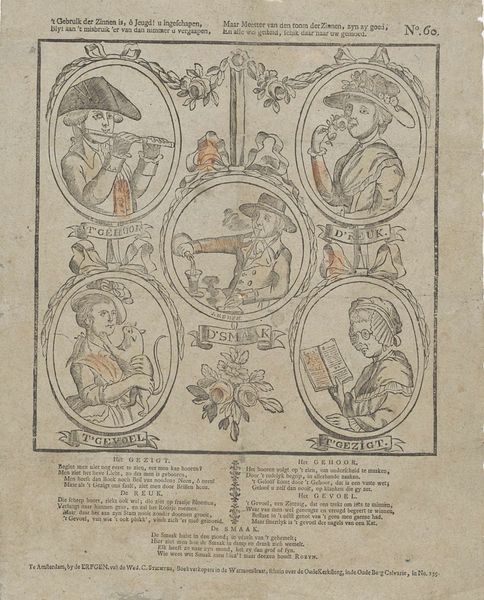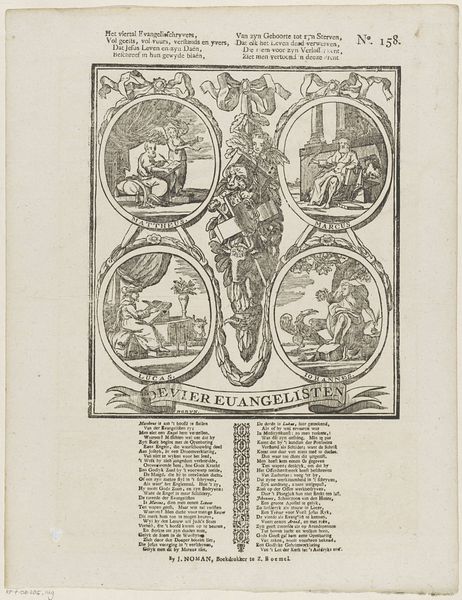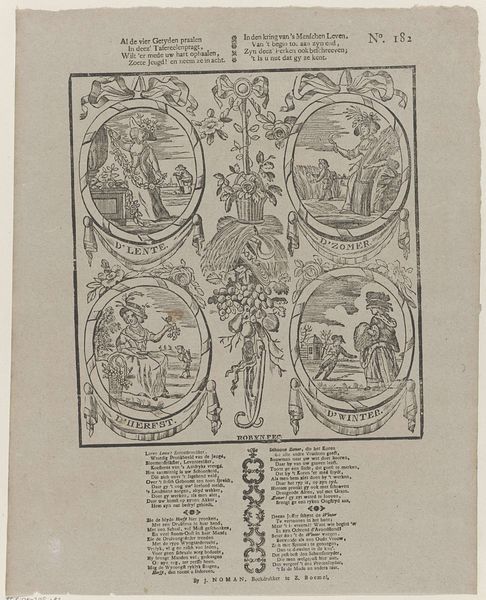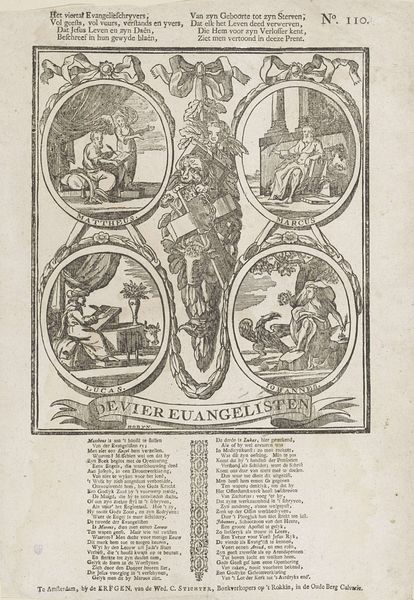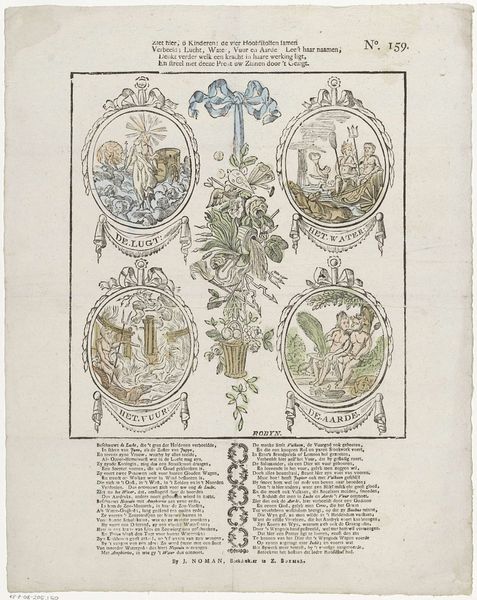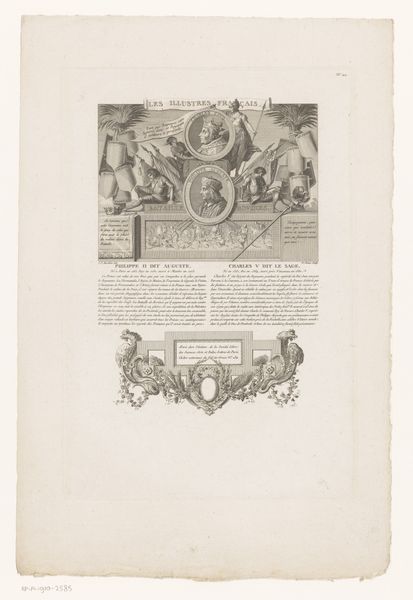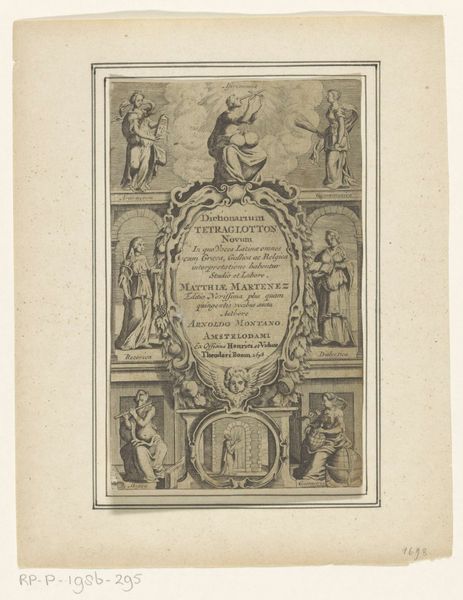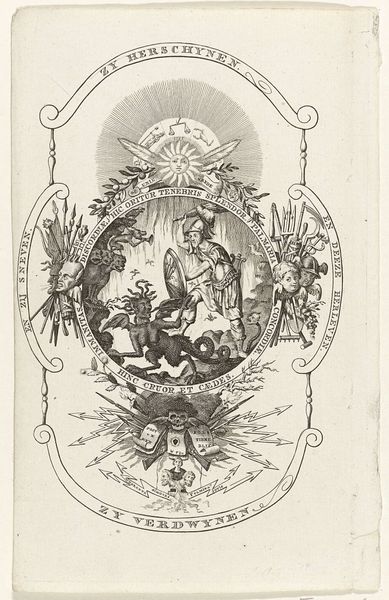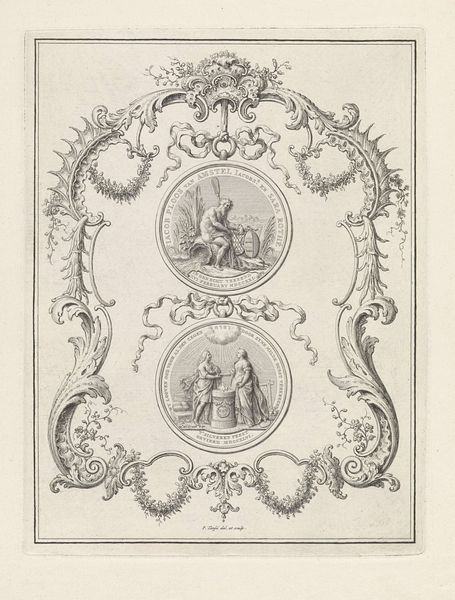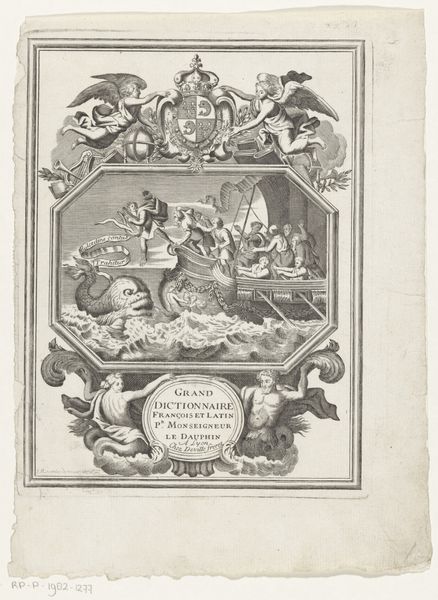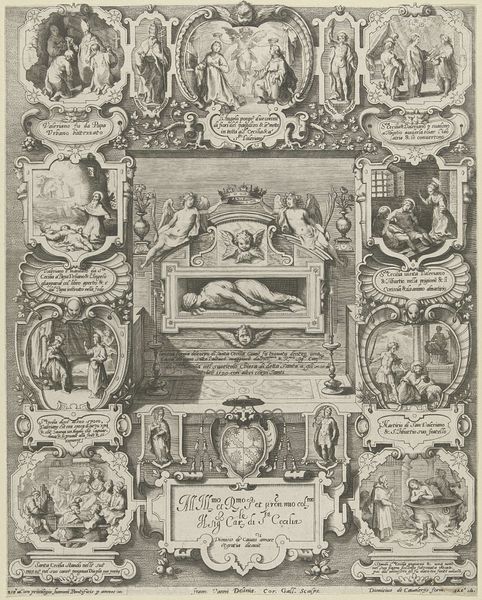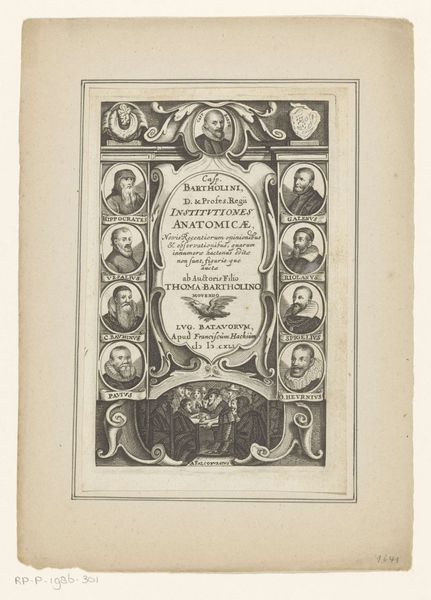!['t Is Pinkster, en de bloemen praalen / in hoven, velden, groene daalen [(...)] by J. Robyn](/_next/image?url=https%3A%2F%2Fd2w8kbdekdi1gv.cloudfront.net%2FeyJidWNrZXQiOiAiYXJ0ZXJhLWltYWdlcy1idWNrZXQiLCAia2V5IjogImFydHdvcmtzLzcxZGQwMjE4LTg2ZDUtNGNhYS04ZmY2LWQ5NGMyNDU2NTM3MC83MWRkMDIxOC04NmQ1LTRjYWEtOGZmNi1kOTRjMjQ1NjUzNzBfZnVsbC5qcGciLCAiZWRpdHMiOiB7InJlc2l6ZSI6IHsid2lkdGgiOiAxOTIwLCAiaGVpZ2h0IjogMTkyMCwgImZpdCI6ICJpbnNpZGUifX19&w=3840&q=75)
't Is Pinkster, en de bloemen praalen / in hoven, velden, groene daalen [(...)] 1806 - 1830
0:00
0:00
jrobyn
Rijksmuseum
drawing, print, engraving
#
drawing
#
narrative-art
# print
#
figuration
#
line
#
genre-painting
#
academic-art
#
engraving
#
miniature
Dimensions: height 399 mm, width 319 mm
Copyright: Rijks Museum: Open Domain
Curator: Let's discuss this print, held here at the Rijksmuseum. It's titled "'t Is Pinkster, en de bloemen praalen / in hoven, velden, groene daalen," created sometime between 1806 and 1830 by J. Robyn. The medium is engraving, typical for prints of the period. What’s your first take on it? Editor: Crowded, almost aggressively so. But in a charming way? Like peering into someone's jam-packed cabinet of curiosities. And despite the linear style, the faces are so expressive, little vignettes caught in time. Curator: Absolutely. Each vignette depicts one of the five senses. "T Gehoor," hearing, is a man playing a flute. There’s “D’Reuk,” smell, depicting someone smelling a flower, and so on. Each is framed in an oval and carefully arranged with decorative elements. The print relies heavily on text accompanying the visuals; its interplay with each of the five senses reflects an era emphasizing education and understanding of the world through empirical observation. Editor: The artist really crams in the details. It almost feels as though each frame could function alone as its piece of work, it also makes it hard to really appreciate each of them with the ensemble format they exist in now. Did it feel as overwhelming in the 19th Century or were people accustomed to dense informational visuals such as these? Curator: These prints often served educational or moralizing purposes. They were produced in multiples to make accessible broader concepts of the self in social interaction, moral guidance, and the structured perception of the world, as demonstrated by its five senses. It mirrors the pedagogical approaches during that period. Editor: Knowing it has an educational focus makes it far more comprehensible as a complete object. Before it struck me as the doodles from an over-caffeinated artist on Pentecost, the occasion denoted by the prints title, I would argue that this actually adds an aura of warmth, despite its cold execution. It certainly shows how far teaching styles have shifted in two centuries. Curator: I agree, looking closer now I admire Robyn's work of both artistry, accessible dissemination of social insight and reflection upon them. Editor: Indeed, a compelling confluence of craftsmanship, enlightenment ideals, and a uniquely intimate glimpse into a world increasingly devoted to reason and science.
Comments
No comments
Be the first to comment and join the conversation on the ultimate creative platform.
